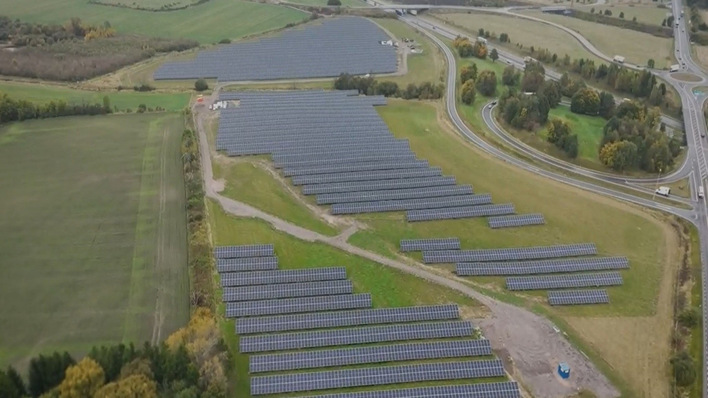To do this, it uses the heat of the sun in a special reactor. Synthesis gas can then be used to produce liquid fuel using standard industrial processes. With this test at DLR's large-scale research facility, the Swiss company has reached an important milestone for producing solar fuels on an industrial scale in the future.
"DLR congratulates Synhelion on this success on the way to making innovative technology ready for the market and application. At the same time, we are pleased that DLR, with its large-scale research facilities, was able to serve as a platform for this development," says DLR Executive Board Chair Prof. Dr.-Ing. Anke Kaysser-Pyzalla. Just last year, the Swiss company Synhelion took over the DLR company Heliokon, which now operates as Synhelion Germany and carries out large parts of the operational implementation.
Way paved for the industrial production of CO2-neutral jet fuels
Philipp Good, Chief Technology Officer (CTO) of Synhelion, comments, "By successfully producing solar synthesis gas at DLR's Multifocus Solar Tower, we have made the dream of converting sunlight into fuel suitable for industrial use. The last major technical milestone in scaling up our technology has thus been achieved.
Now the way is paved for the industrial production of CO2-neutral jet fuels, which we plan to start next year in Jülich. Thanks to DLR's outstanding research facilities, we have been able to massively accelerate the industrialization of our solar fuel technology."
Produced from the sun, water and carbon
Solar fuels are liquid fuels produced from the sun's energy, water and carbon. If CO2 from the atmosphere or methane from biowaste, for example, is used as the source of carbon, this fuel is climate-neutral. This means that when it is burned, only as much CO2 is released as was removed from the atmosphere for its production. Solar fuels belong to the so-called alternative fuels.
They are necessary - in addition to alternative drives and other technological improvement options - to achieve the ambitious climate protection targets in the mobility sector. In aviation, they are the most promising solution, especially for long-haul routes. "The project is therefore an excellent example of how DLR research actively supports industry and how we are working together to tackle the challenges of tomorrow," summarizes Karsten Lemmer, member of the DLR Executive Board responsible for Innovation, Transfer and Scientific Infrastructures. (hcn)
Did you miss that? Increasing the efficiency of solar thermal power plants







